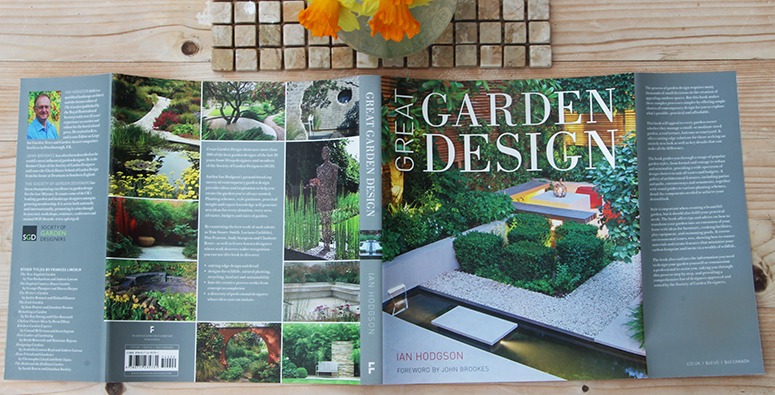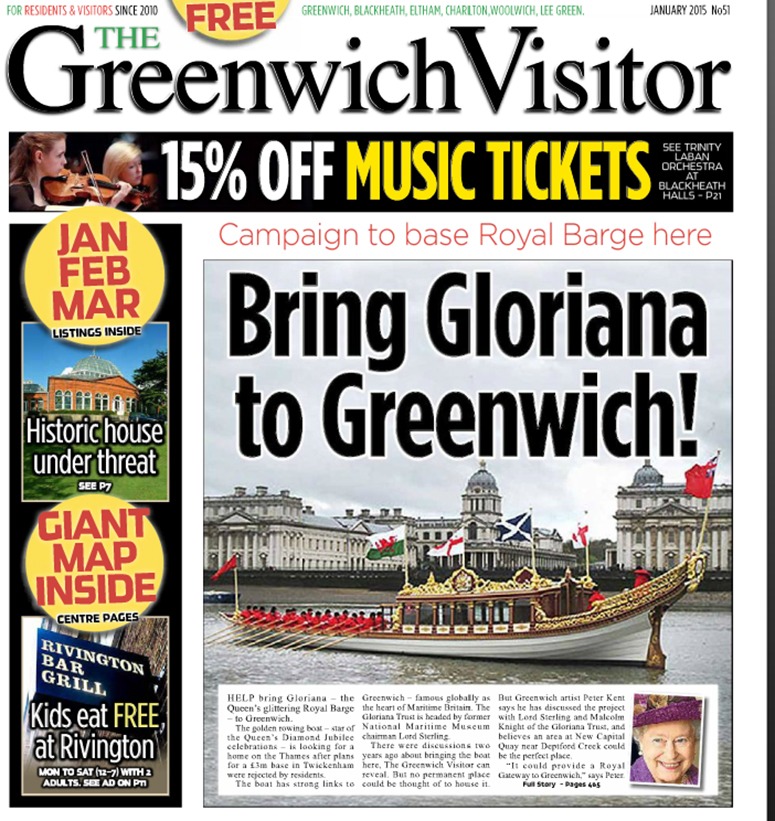Please see this page for video reviews of selected show gardens.
I’ve been too hot at Chelsea and I’ve been too cold. On Press Day, in 2015, I was too wet and too windswept. When the sun came out in the afternoon, the Press had to leave so that the Royal Family could enjoy the show. I’m not a republican, yet, but the rain did fall like stair rods. So what of the design quality of the Show Gardens? I thought some of the Fresh Gardens, on Royal Hospital Way, were better than most of the large gardens on the Main Avenue – some of which could be described as Stale Gardens.
Author Archives: Tom Turner
Great Garden Design by Ian Hodgson – review
The Society of Garden Designers has produced a very good book on garden design. I commend it to anyone commissioning a garden and to future historians of garden design.
The section I like best, on Outdoor Experiences, deserves to become a book in its own right. There are only four sections, on Relaxing, Dining, Playing and Bathing. But there are subsections, so that Dining includes Cooking Outside, Keeping Livestock and Growing Your Own.
This approach to garden design comes, in the UK, from John Brookes. His Room Outside, first published in 1969, launched British garden design on its profression from the Arts and Crafts Style to Modernism. In his introduction to Great garden design Brookes draws attention to the way in which ‘this book breaks down the overall plan of a garden and deals with the various sections and functions it may include’.
A failure to grasp the key principle of Modernism hindered, and hinders, the development of garden design. ‘Form follows function’ is the most convenient summary of Modern Movement principles but caused problems for garden designers. ‘What’ they wondered, ‘are the functions of a garden?’ My criticism of Great garden design is a weakness in the history and theory of garden design.
After Brookes’ Forward and an Introduction by Ian Hodgeson (the author) there is a chapter on Contemporary Garden Styles. A section on Sourcing Inspiration is followed by a section on Choosing a Style – which struck me as a return to the high Victorian eclecticism of Edward Kemp and the Mixed Style. It is followed by a menu of styles. Their names are Contemporary Formal, Urban Chic, Cottage and Country Style, Natural Style, Water Gardens and Subtropical Style. This is a departure from Modernism but I would not call it Postmodern and nor do I think the categories will be of use to those future garden historians who come across this useful and very well-illustrated book.
Great Garden Design was published 5th March 2015 by Frances Lincoln www.franceslincoln.com.
Bring the royal barge, Gloriana, to Greenwich
As explained on the video about Greenwich Park, Henry VIII and Elizabeth I were rowed from Whitehall Palace to Greenwich Palace in a royal barge. So keeping Gloriana in Greenwich is a really great idea. The Gloriana is a 94-foot-long (29 m) royal barge which was privately commissioned as a tribute to Queen Elizabeth II. The project to build Gloriana was initiated by Lord Sterling, who liked the idea of a waterborne tribute to the Queen for her Diamond Jubilee in 2012. The Greenwich Park video has a short clip of the Gloriana passing some suburban houses. She would look much better traveling between Whitehall and Greenwich – preferably with wealthy tourists paying a fortune for each trip. It costs £2,800 for a ceremony in the London Eye. How about £10,000 for a couple of hours on Gloriana? I would see it as a contribution to London’s urban design.
Is Greenwich Park London’s most interesting Royal Park?
I think the answer is ‘yes’ – and it should certainly be included in London garden tours. For a start, it is the oldest of London’s Royal Parks. Greenwich has associations with the period in British history most loved by the BBC and English schools. Only the 1930s and ’40s rival the Tudors.
Greenwich was enclosed by Duke Humphrey of Gloucester, who also built what became the Royal Palace of Placentia. Henry VIII was born here. So was his daughter, Elizabeth I. The design and the design history are also of great interest. Greenwich Park began as a late-medieval Hunting Park with an Early Renaissance garden. It was then influenced by the Baroque Style in the seventeenth century by the Serpentine style in the eighteenth century and by the Gardenesque Style in the nineteenth century. The green laser beam is a Post-Abstract twenty-first century addition – and a great idea. The designers who influenced the park include Inigo Jones, André Le Nôtre, John Evelyn Christopher Wren, Lancelot Brown and John Claudius Loudon.
Please stop killing London's cyclists and pedestrians – give them good landscape architecture
Here is a video of the recent Stop Killing Cyclists protest march in Oxford Street. It was very well organised, with a theatrical dash, but did not get the media coverage it deserved. There was a massive police escort. The officers were very friendly to the marchers but I wonder if the relationship has become too cosy. The police would not have liked it but we might have achieved more if the die-in had taken place in Oxford Circus and if we had waited for the police to remove each and every demonstrator in a police van.
Tower of London Poppy Art Installation / Landscape Architecture
Here is the text of the above video reviews of Paul Cummins and Tom Piper’s Blood-swept lands and seas of red, where angels fear to tread.
The poppy installation at the Tower of London is by Paul Cummins, a ceramic artist, with help from Tom Piper, a stage designer. Its name comes from a Derbyshire man who died in Flanders. He wrote of The blood-swept lands and seas of red, where angels fear to tread. There are eight hundred and eight-eight thousand two hundred and forty six poppies: for each British and Colonial death in the First World War.
The Prime Minister, David Cameron, told the House of Commons it was a stunning display, and extremely poignant.
The Washington Post described the installation as ‘a must-see on the tourist trail.
CNN John McCrae’s famous poem, which launched the poppy metaphor: In Flanders fields the poppies blow, Between the crosses, row on row, That mark our place.
The Professor of the History of War at King’s College, observed that : Since the war is still generally misunderstood, such popular interest is encouraging, and the more people who have an opportunity to visit the poppies the better.
The Mayor of London called for the installation to be kept in place a bit longer. A spokesperson from the Historic Royal Palaces responded that The transience of the installation is key to the artistic concept, with the dispersal of the poppies into hundreds of thousands of homes marking the final phase of this evolving installation’.
The actress, Sheila Hancock, suggested that the poppies should be mown down by a tank to commemorate the horror of war.
Jonathan Jones, an art critic with The Guardian, also wanted more horror. He argued that In spite of the mention of blood in its title, this is a deeply aestheticised, prettified and toothless war memorial,
Robert Hardman, for the Daily Mail, responded by calling him a Sneering Left-wing art critic.
So what do I think? Well, as an art installation, it’s hard to fault. As a war memorial, one might think it lacks pathos. But the 1-for-1 symbolism and the fact that the poppies are frozen in time save it from being floral bedding.
For pure pathos a moat-filling tank of red liquid, inspired by Richard Wilson’s installation at the Saatchi Gallery, would have been more telling – and could have evolved into the water-filled moat the Tower needs. But I doubt if this would have raised any money for soldiers’ charities – as the poppies most certainly have done.


